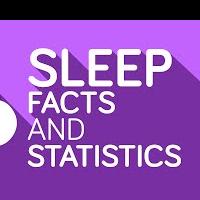Sleep Facts and Statistics
Sleeping is a daily process that should take seven to nine hours a night.
To feel fresh when waking one must sleep uninterrupted throughout the night. thirty nine percent of adults receive less than the recommended seven hours. The amount of sleep needed is dependent of the individual and our age. ideally we sleep enough so that we are able to wake without an alarm clock. sleepiness arrives in relation to the amount of time we are awake. It's also controlled by our biological (circadian) clock making humans alert while it is light outside and sleepy by night.
REM or rapid-eye movement and NREM or non rapid-eye movement switch every ninety minutes during a normal night's sleep. this process is called sleep architecture. NREM has 4 stages. As we linger between sleep and wakefulness we are in stage one. In stage two cognizance of our surroundings disappears. Also body temperature decreases. The deepest part of sleep makes up stages three and four. At this point, we enter restorative sleep. We re-energize, allow hormones for growth and development to release, blood pressure drops and our breathing become slower. REM. Our brains are active at this time and dreams occur. Our bodies relax and breathing and heart rate may fluctuate.
According to a 2002 poll in America, seventy five percent adults have sleeping problems a few times in any given week. In the united states around one hundred thousand vehicle crashes a year are sleep related. These accidents make up 1500 deaths.
Insomnia is a disorder which prevents a person from falling asleep, staying asleep or having a non-refreshing sleep. Up to forty percent of adults have insomnia throughout a year. One-third of people will suffer from insomnia at some point. Ninety percent of those suffering from depression suffer from insomnia. Bad dreams are common at all ages unlike night terrors. Night terrors are characterized by: screaming, kicking, panicking, sleepwalking, trashing and talking. Night terrors are normal until age 6. 18% of people are susceptible to sleepwalking. Most are children. Boys are more prone than girls to sleep walk. Want to sleep better? Pass on, caffeine, alcohol and nicotine. Exercise often but not before your proposed bed time.
Narrated by Erica Laba. Animated by Andrey preston Follow The Infographics Show on Twitter (@theinfoshow) and facebook also sending your suggestions on what you would like to see in the future episodes.
Don't forget to leave us a comment on www.SuprNova.org

